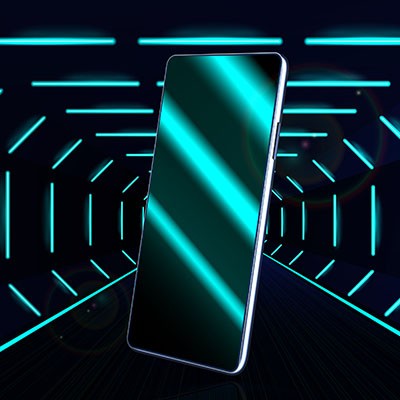Technology gets better and more efficient over time, and smartphones are one of today’s standout examples. Although their growth has stagnated a bit in recent years, it’s no small thing to say that smartphone innovation has really taken off, offering extremely fast processors, data storage in the cloud, and so much more. Let’s go over what you might look at when you purchase a new smartphone.
Today’s Smartphones
Device reviews have allowed many individuals to create business models for themselves covering the latest devices on the market, and considering their reach, manufacturers have to cater to them to an extent, even if the average user isn’t going to notice some of the minor year-to-year changes. Most of the improvements are made to the cameras with only slight increases in performance and processing.
Aside from the recent surge in folding phones, most devices look fairly similar to each other. All flagship smartphones have a 5 nm processor or better, 356 GB of flash memory, 8 GB of RAM, and a bezel-less display. Despite this, consumers’ desires for an upgrade drive manufacturers to improve the device with each iteration, no matter how small, so that people can feel like they are getting their money’s worth out of the new device.
What You Should Look For
First, let’s take a look at the form factor for your desired device. Most smartphones look the same, save for the innovative new folding smartphones with foldable OLED screens. While they are quite pricey, they offer opportunities for manufacturers and developers to do something differently to stand out.
So, what should you look for in a new device? Let’s take a look.
Build Quality
Your smartphone’s build quality will impact how long the device lasts while also impacting the user experience. Most high-quality smartphones are built using a stainless steel or aluminum frame covered with tempered glass, like Corning’s Gorilla Glass. The higher the quality of the materials, the better the user feels.
Display
Most of today’s flagship devices have wonderful displays, and since most users will use their devices for media consumption, this is no mistake. You’ll want a larger display if this is important to you, but there are other mid-range devices that have perfectly usable screens, even if they are flagship devices from a couple years ago.
Processing Power
This is where some smartphones start to outpace their competition. You’ll want a device with a multi-core 5 nm processor. This probably doesn’t mean much to most people, but typically most modern mid-range and flagship-level devices meet or exceed what you would probably need. This impressive processing power means that you essentially have a small computer in your pocket, so you will naturally want to look for the best computing value for your purchase.
Camera
Most manufacturers will highlight the high number of megapixels in their cameras, but many other factors impact the quality of a camera, including the number of lenses, their focal length, ISO levels, pixel size, and autofocus. Cameras on smartphones are one area that sees substantial improvement over the years. You can usually rely on Apple, Samsung, and Google to have the best cameras across their lines of phones.
Battery
Your smartphone’s battery will directly affect how reliable it is, so you need to take it into careful consideration. If the device has to be plugged in, you’re not getting much mobility from it. Most phones you should want to use have at least 3,000 mAh batteries. We should note that foldable smartphones will use more power than your traditional smartphones, too.
Operating System
When you purchase a smartphone, it will typically run either Apple’s iOS or Google’s Android OS. Most phones will use some version of Android, and while not all of the versions are as dynamic and powerful as the others, it’s still important to know which one you are running so you can get the most out of your device. Security also factors into your operating system, too, as well as user experience. If you are already familiar with iOS and want to stick with that, you’re going to need to stick with Apple’s iPhone.
Cost
One of the biggest and most important factors to consider is the cost of the device. If you want a top-tier smartphone on the market, you’ll probably spend at least $500 per year of use for the device itself, and that’s without factoring in upkeep and maintenance. Mobile service providers can work with users to finance their devices, but it can also tack on extra costs to your monthly bill.
Other Considerations
Other factors can also contribute to your decision, particularly for niche interests. There are devices with larger displays built for gaming, devices with massive batteries that can go for days without charging, and some with a 3.5mm headphone jack, something which most devices have done away with in favor of Bluetooth technology.
We hope you find these tips helpful for finding your ideal smartphone! Be sure to let us know which device you ultimately go with and why.

